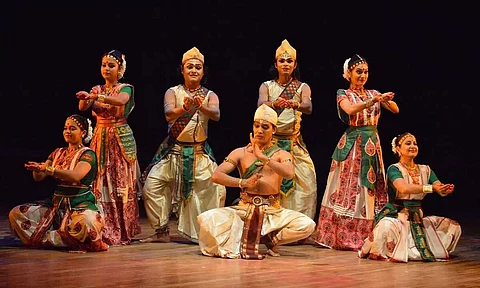
- Home
- Live Blog
- Breaking News
- Top Headlines
- Cities
- NE News
- Sentinel Media
- Sports
- Education
- Jobs

Satrriya is also known as Sattriya Nritya was formed in the Satra monasteries as a contribution to the Bhakti movement of neo-Vaishnavite led by Srimanta Sankardev during the 15th century in Assam. Therefore Sattriya has its origin from Krishna focused Vaishnavism in Assam as introduced by the famous scholar, reformer and Vaishnaya saint Srimanta Sankardev. Sattriya classical dance is more than five hundred years older.
The dance form Sattriya is a powerful medium of interpretation of faith associated with Vaishnavism. This dance form has undergone various changes with time and always came out in a more expanded the form with distinctive styles. It has been preserved for many centuries as committed by the Vaishnava monasteries. As the dance style is related to Sattras and possesses religious values, therefore, it was given the name of Sattriya. Sankaradeva has given the dance form his own unique ideas but by including the characteristics of numerous treatises and local folk dances.
Ojapali and Devadasi are the two dance forms prevailing in the state before the beginning of the neo-Vaishnava movement. The Sangeet Natak Academy in the year 2000 gave the dance form of Sattriya the status of classical dance of India.
Sattriya dance is very different from other forms of dance in its basic positions and attitudes which is called Purush Pak for male and Prakriti Pak for female dancers. Satrriya dance style is based on mythological themes. The dancers' of Satrriya dances with the sound of the various musical instruments like huge drums and big cymbals or bells wearing a beautiful dress, ethnic jewellery and colourful costumes. The vocalist of the dance group sang various songs and the typical popular Assamese music song called Borgeet. The collection of Satrriya dance comprises Ankiya Bhaona and Ojapali dances where some of the dancers' dances on the back playing bells enact drama while reading stories.
The Sattriya dance form is governed by strict laws in regard to the music, Aharyas, footwork and hasta mudras. The two different streams of Sattriya are firstly the collection of Bhaona beginning from Gayan-Bhayanar Nach to the Kharmanar Nach and in second is the dance variable not dependent such as Nadu Bhangi, Jhumura, Chali and Rajagharia Chali. One of the dance historians Dr Sunil Kothari received the Madhabdev Award by the Assam Government for popularizing the state origin dance form Sattriya dance.
The question about the origin of the Sattriya dance form is a very common question asked in the UPSC exams like Sattriya is the dance form of which Indian state? What form of dance is Sattriya
Also watch: